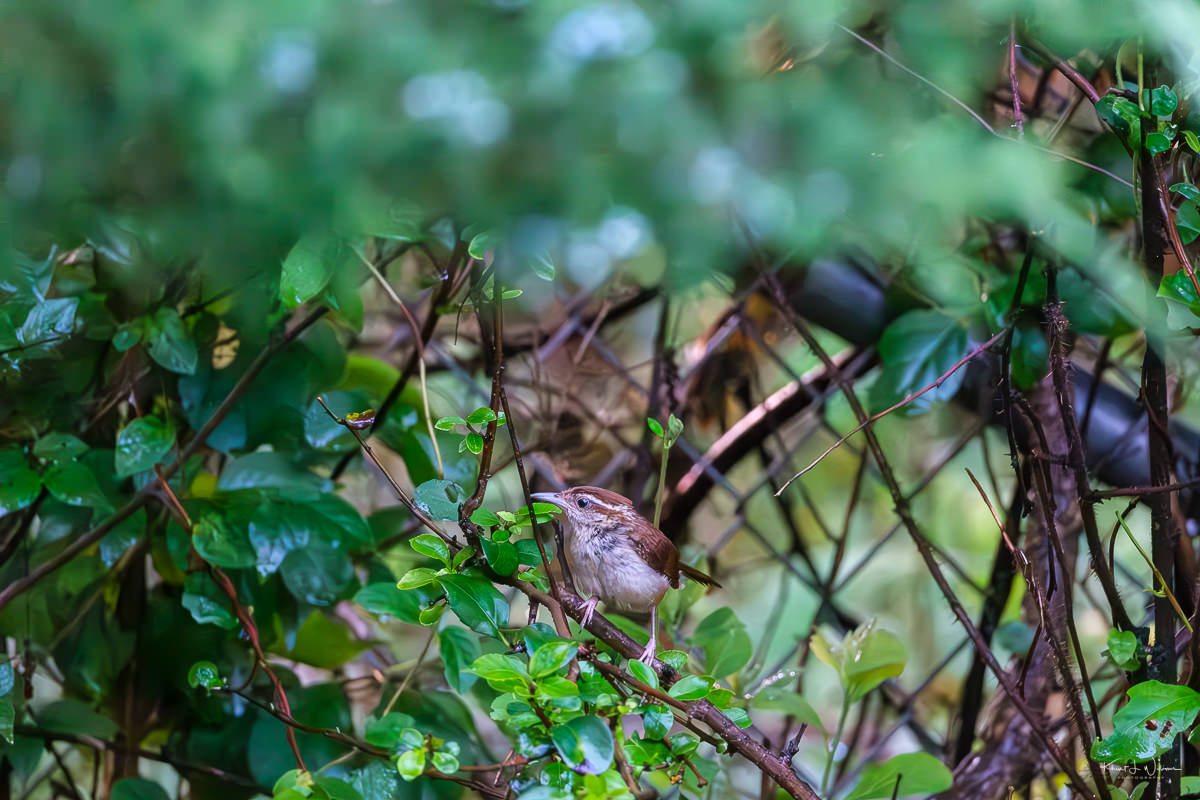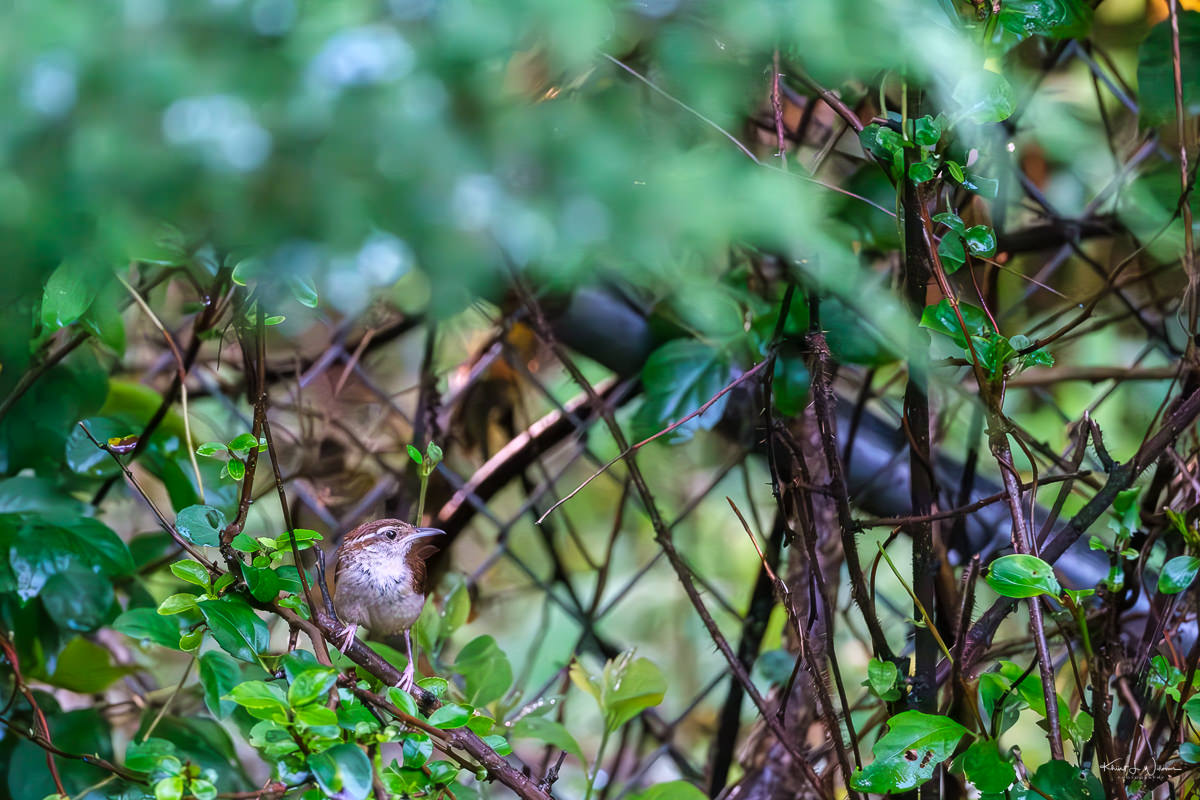I stepped out into my backyard on an early summertime morning. I noticed movement in the overgrown fence that separated my property from the neighbouring woods. The area beyond the fence is an untamed wooded part of the property next door. This morning it harboured a surprise. A small bird with rich cinnamon-brown plumage and a white eye stripe caught my eye.
Using the Merlin ID app, I identified a Carolina Wren perched on a branch of one of the shrubs growing through the fence. Although this bird is elusive, its powerful teakettle-teakettle song echoes through the nearby woods and vegetated areas on the other side of the fence in my backyard.
As an avid nature enthusiast and photographer, I couldn't resist. Quietly, I reached for my camera, hoping to capture the moment. The wren seemed undisturbed by my presence (I was more than 15 metres away), continuing to sing its heart out as if it were performing just for me. It had found a home amidst the tangled vines, shrubs and wildflowers, turning the backyard into its personal stage for its morning symphony. The Carolina Wren sang with enthusiasm. Its voice seemed to fill the entire backyard.
The wren moved from one branch to another, occasionally tilting its head as if to listen for an echo of its own song. I snapped a few photographs, carefully adjusting my camera settings to capture the plumage. The camera clicked away freezing the moment. With bird photography, one must acknowledge the importance of perseverance in facing challenges and embracing the wild aspects of life.
The wren finished its song, gave me a final, inquisitive look, and flew off into the woods.

Unlike other wren species, only the male Carolina Wren sings, creating a unique and vibrant melody.
Carolina Wrens also visit backyard feeders, especially in winter when suet is available. They seek shelter during cold winters in nest boxes filled with dried grasses. I plan to plant a nest box this fall to encourage these birds to return to my backyard. Interestingly, Carolina Wrens have been venturing farther north during the winter in recent years.
The birds are sensitive to cold weather, with northern populations declining after severe winters. However, their range has expanded northward due to gradually increasing winter temperatures over the past century.
To attract Carolina Wrens to my backyard, I hang suet-filled feeders throughout the year, including the winter. They may also take up residence in brush piles. There are none in my backyard, so I expect this specimen lives in the woods on the other side of the fence.

